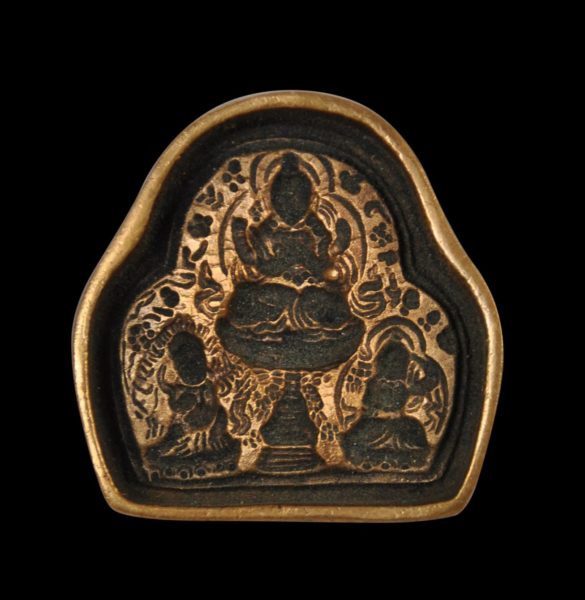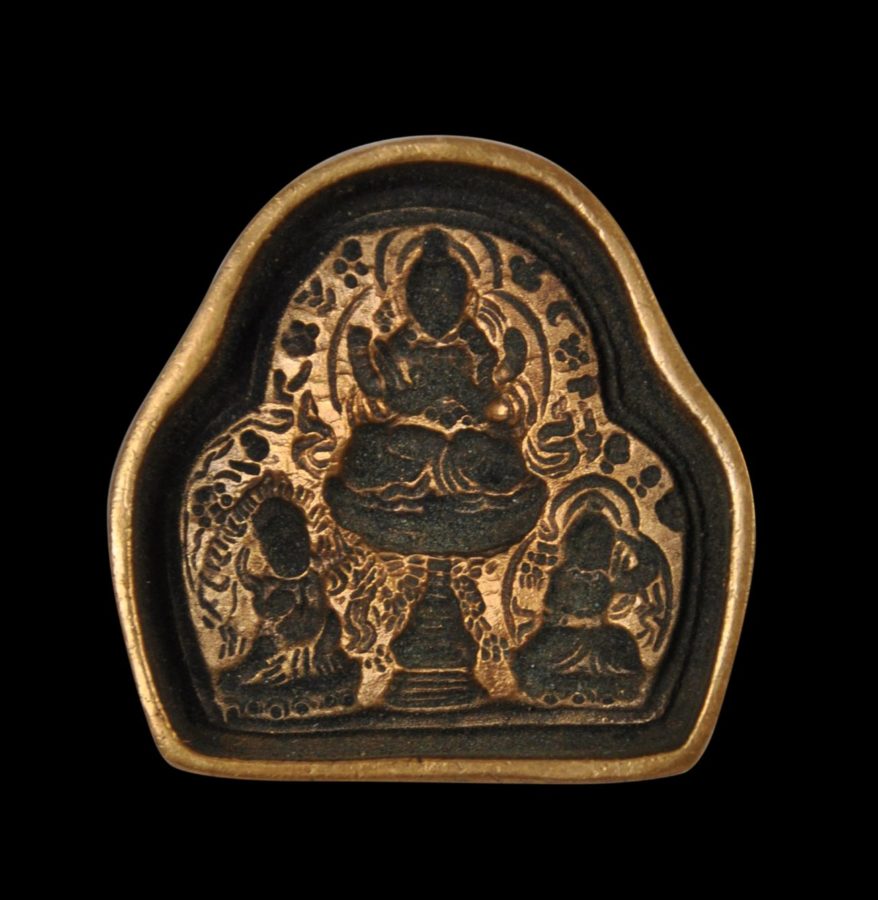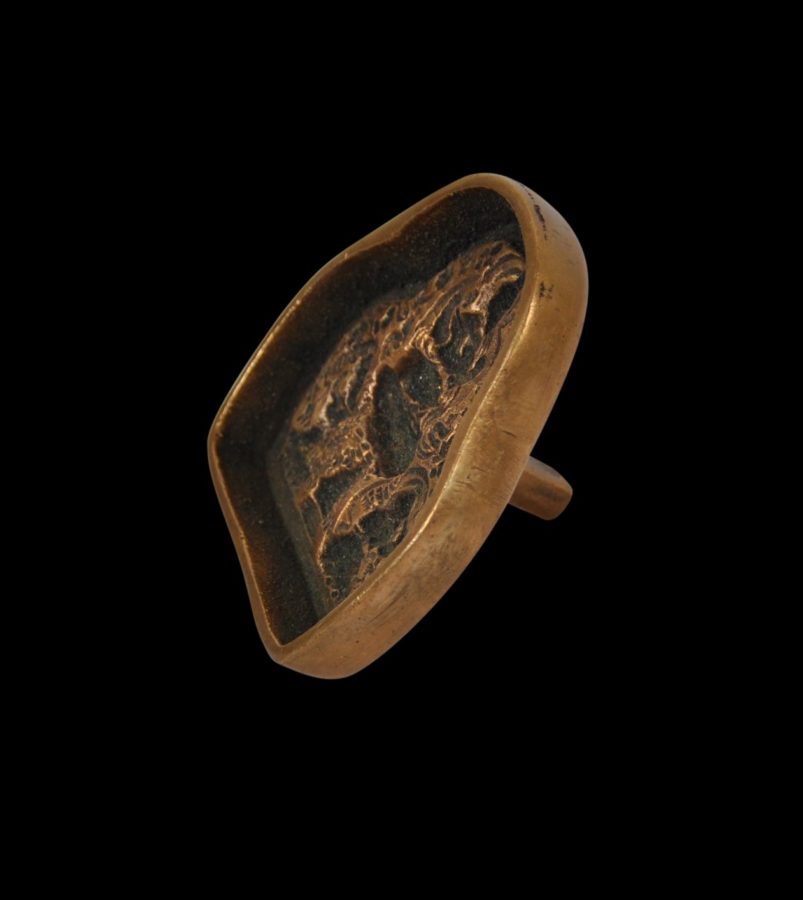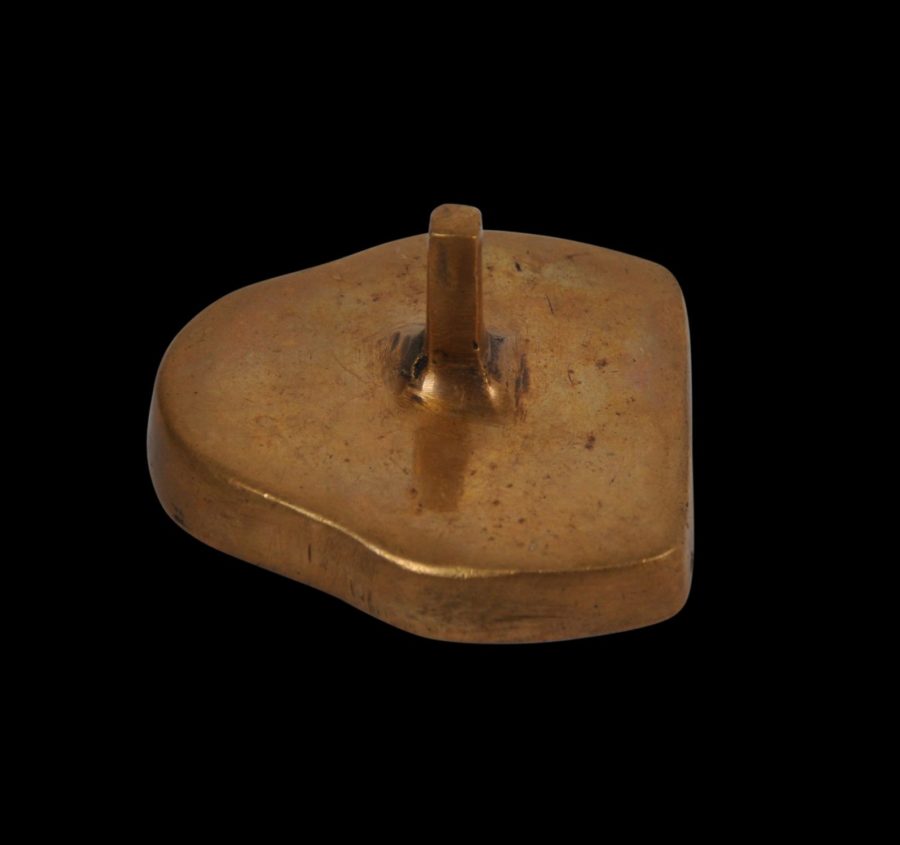This cast brass mould dates to the early 20th century or earlier and would have been used in Tibet or elsewhere in the Himalayas to make votive plaques.
Clay mixed with ritual materials such as ground incense, grains and/or the ashes of a sacred individual would have been pressed into the mould, removed and then dried in the sun. (Prosser, 2010, p. 87).
Called a tsha-tsha in Tibet, such a plaque increased the Buddhist merit attributable to the individual who commissioned it, and even to those who viewed it. Tsha-tshas often were left as offerings at sites of pilgrimage.
The example here has three figures – a large Buddha or lama-type figure and two smaller ones. Each sits cross-legged,
The mould has an attractive colour and a central finial or pull on the reverse.
The brass mould here is in excellent condition. It is sculptural in its own right.
References
Proser, A., (ed.), Pilgrimage and Buddhist Art, Asia Society Museum/Yale University Press, 2010.





